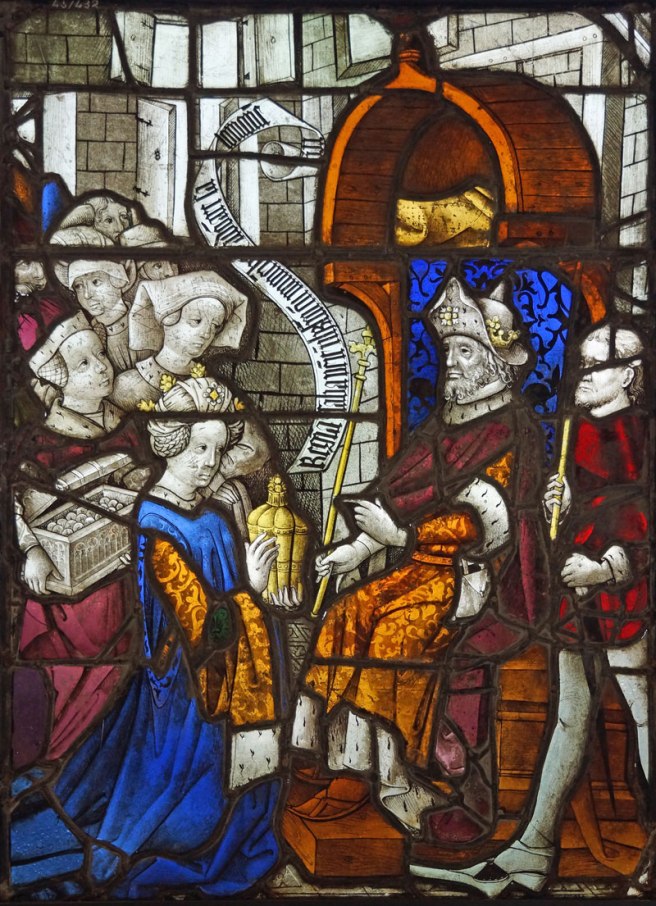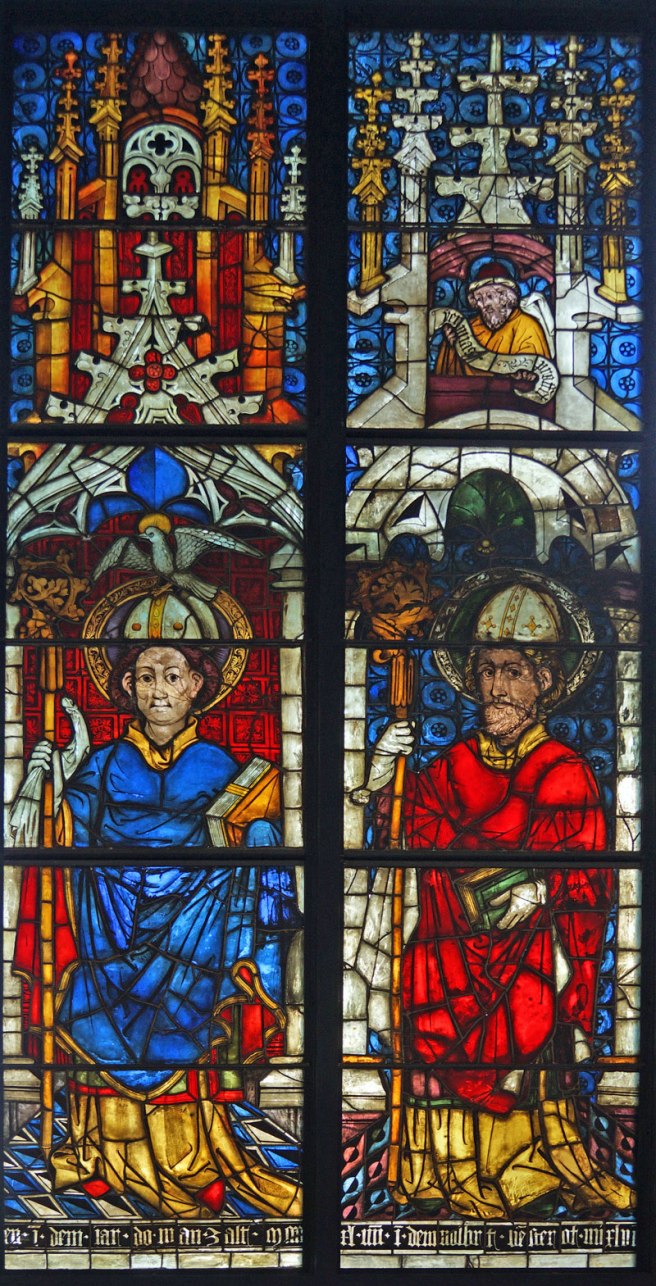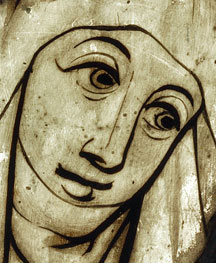A cartoon is a full size, 1:1 scale drawing of a design for a stained glass window. The cartoon shows information needed by the craftsmen to create the panel. This includes where the lead lines will be, so the glass cutter knows where to cut each piece of glass, which colour each piece of glass should be, and important painted details.
The Burrell Collection has some examples of cartoons such as the one in ink on paper, below. It was made in 1592 for a Swiss heraldic panel. The outline of each piece of glass, to show where it should be cut, was marked in red ochre, and letters were used to indicate which colour of glass should be used for each piece.

A small scale design, known as a ‘vidimus’ would have been made first, to show the client for their approval before it was scaled up to full size for the cartoon. In the early medieval period, before paper became widely available, the cartoon was drawn using lead or tin on a table prepared with whitewash or chalk. The glass would be cut to size, painted and assembled on top of the cartoon table. When the panel was finished, the table would be whitewashed over ready for the next panel, so the cartoon could not be preserved. Very few examples of these boards survive, but documentary evidence suggests they were in use up until the 14th century. As paper became more easily available it started to replace the use of tables for cartoons as the cartoon could be stored for future reference and adaption[1].
Because of the time and skill necessary to produce a cartoon they were often re-used. When made on a table the design was often reused for other panels within the same window and simply reversed, or made to look different by using different coloured glass. As paper cartoons became more widely used they were often saved for re-use, either within a studio, passed on from glazier to glazier, or sold to another workshop. Because of this, very similar, almost identical panels can be found in different windows. The design or elements within the design were often altered slightly by reversing the image, or sections of the image, and by making small adjustments to the painted details whilst keeping most of the lead lines the same[2].
There are occasionally examples of stained glass panels in different locations which were clearly produced from the same cartoon, changing only the colour of the glass used. A good example of this is the Solomon and Sheba panel on display in the South Gallery of the Burrell Collection. The original cartoon is long since lost, but its use can be seen in another very similar panel in The Cloisters Museum, New York.


Solomon and Sheba, The Metropolitan Museum of Art, Bequest of George D. Pratt, 1935 (41.170.103). Image © The Metropolitan Museum of Art.
The upper image here is of the Burrell Collection panel and the lower is from the MetropolitanCloistersMuseum in New York. You can immediately see that they are both from the same cartoon, as the basic design is the same, but there are small differences such as the colouring of the panel, the Cloisters panel has no writing on the scroll, and the style of glass painting is slightly different.
Another example is the “Christ Carrying the Cross” panel, also on display in the South Gallery of the Burrell Collection. The layout of the design is almost identical to that of a panel depicting the same scene in Cologne Cathedral. Another two stained glass panels exist, which were also made from this cartoon, with only minor differences in colour of glass used and the paint style. One is in GreatBookhamChurch, Surrey, the other is in Cleveland Cathedral, USA.
They were all clearly made from the same cartoon, adapting the lead lines slightly and changing the colours of glass used. For example in the Burrell Collection clear glass was used for Christ’s robe, whereas blue glass was used in the Cologne Cathedral panel.


© Raguin/MMK – http://college.holycross.edu/projects/kempe/devotion/christs_passion/passion.html
The two panels were painted in very different styles with only small changes to the lead lines. This is very clear in these details of Christ’s face:

The difference in paint styles between each panel shows that cartoons were kept and re-used by different people, either within the workshop, shared with other workshops, or passed on from one glazier to the next.[1]
S.Brown, (1992) Stained Glass An Illustrated History and R. Marks, (1993) Stained Glass in England During the Middle Ages
[1] L. Cannon, (1991) Stained Glass in the Burrell Collection










